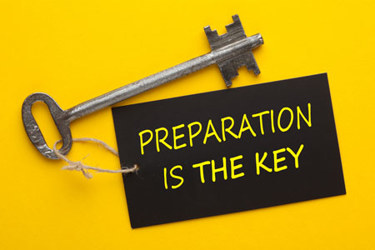6 Ways To Achieve Manufacturing Audit And Inspection Readiness
By Sarah Boynton, Quality Executive Partners

In the highly regulated biopharmaceutical and CGT manufacturing industry, audit and inspection readiness is of paramount importance to ensure compliance with rigorous quality standards. Being well-prepared for audits and inspections not only streamlines the process but also instills confidence in regulatory bodies and stakeholders. Several times throughout my career there have been instances where a regulatory body has popped into the facility for a surprise visit, truly testing how well the organization is maintaining the expected standards day to day. Sure, when you know the date range inspectors or clients plan to be on-site, you can invest the weeks ahead of time to get areas in order, but to what end? It often requires a huge monetary investment to bring in what I like to call a “cleanup crew” to shrink overdue metrics, perform mass training events, and identify gaps. Unfortunately, the changes made rarely last, and after it’s over and everyone has a sigh of relief, things go back to the way they had been done. This type of Band-Aid approach works to appease the inspection team but sends a message to your employees that quality only matters sometimes.
To achieve audit and inspection readiness, it is crucial for manufacturing and quality teams to work collaboratively and implement effective strategies. It is a symbiotic relationship between these two teams that leads to a healthy culture. In a perfect world, quality is not limited to a dedicated quality group but is embedded in every function and embraced by every individual. In this perfect world, each individual, regardless of their role, actively participates in maintaining the highest quality standards. They demonstrate behaviors such as attention to detail, adherence to standard operating procedures (SOPs), and a commitment to continuous improvement. They proactively identify and report any deviations or potential risks, follow robust documentation practices, and actively engage in training and professional development. Collaboration, communication, and accountability are integral parts of their daily interactions. Ultimately, a quality mindset becomes ingrained in the organizational culture, enabling seamless integration of quality principles and practices into every function and ensuring the delivery of safe and effective therapies to patients in need.
In this article, we will explore how the manufacturing and quality teams can align their efforts and discuss six practices to maintain audit and inspection readiness at all times. By fostering a proactive approach and leveraging valuable resources, manufacturing companies can navigate audits seamlessly and demonstrate their commitment to upholding quality standards.
- Clear Communication Channels: To foster effective collaboration, manufacturing and quality teams should establish clear communication channels. Regular meetings and discussions enable both teams to align their objectives, address potential gaps, and share insights. By fostering open lines of communication, they can identify and address issues promptly, preventing them from escalating and impacting audit readiness. Additionally, communication platforms and project management tools can be utilized to ensure seamless information sharing and facilitate real-time collaboration. Visual metrics are a great way to keep everyone aware of when teams aren’t hitting the mark.
- Document Control and Management: Maintaining accurate and up-to-date documentation is essential for audit readiness. Manufacturing and quality teams should establish robust document control and management systems. This includes implementing electronic document management software that enables version control, document tracking, and easy retrieval. By centralizing document repositories, teams can ensure that all relevant documents are readily accessible during audits. Really consider how you are going to have to access and deliver the information to the auditors. Timely — or untimely — retrieval of requests can definitely alter the trajectory of an inspection. Additionally, standardized document templates and clear naming conventions simplify document creation, organization, and retrieval.
- Effective Training and Competency Programs: Effective is the key word here. Investing in training and competency programs is crucial to ensure that employees understand their roles and responsibilities in maintaining audit readiness. Manufacturing and quality teams should collaborate to develop comprehensive training programs that cover good manufacturing practices (GMP), SOPs, and regulatory requirements. Regular training sessions, refresher courses, and assessments help reinforce knowledge and ensure compliance. Tracking and maintaining records of employee training completion are essential for audit readiness. Also, after the training is complete, there must be oversight and follow-up to gauge whether what has been taught is actually being applied during the process. Was it effective? If people leave the training having learned one way of working (the right way) and then are put into a team that operates differently, there is a bigger issue. Most often, people are unable to meet the standards or expectations because of inadequacies in their documents, materials/equipment, or environment, and no amount of retraining will fix the problem.
- Robust Change Control Processes: Manufacturing processes are dynamic, with changes being implemented regularly. To maintain audit readiness, teams must establish robust change control processes. This includes a thorough evaluation of proposed changes, impact assessments, and proper documentation. Collaboration between manufacturing and quality teams is essential to assess the potential risks associated with changes, ensuring proper validation and qualification and updating relevant documentation and procedures. The goal here is to simplify and streamline the actual change control process. If it is too cumbersome or not done consistently, we as humans will find a way around it.
- Real-time Monitoring and Data Analytics: Real-time monitoring and data analytics can greatly enhance audit readiness. By leveraging advanced monitoring systems and data analytics tools, manufacturing and quality teams can proactively identify potential issues, trends, and deviations. Continuous monitoring of critical parameters, process controls, and quality metrics enables early detection of anomalies and timely corrective actions. Empower the teams to work together with other functions, such as process development, to establish better ways of working. This leads to the final and most important practice, often overlooked until a warning letter arrives.
- A Culture of Continuous Improvement: Creating a culture of continuous improvement is vital for maintaining audit readiness. Encouraging feedback and suggestions from manufacturing and quality teams fosters a proactive mindset. Regular reviews of audit findings and corrective actions help identify recurring issues and implement preventive measures. Stop filling your quality systems with valuable data and then ignoring it after the record is closed or the batch is released. To do this, create goals for your management team that include assessing their team’s performance by making it easy for them to access the information associated with performance. How? Include names or initials in deviation records, publicly reward those doing the right thing, and conduct mandatory weekly walkthroughs with both manufacturing and quality management. Some people may be cringing at the idea of names in deviation records; I used to be that way, too, until I worked for an organization that didn’t shame people for erring but instead saw it as a true learning moment. By prioritizing quality improvement initiatives, encouraging positive reinforcement, and fostering a sense of ownership and accountability, manufacturing companies can stay ahead of compliance requirements and maintain high standards of audit readiness.
Achieving audit readiness is not a snapshot in time but an ongoing commitment to maintaining day-to-day standards. It requires collaboration, practical measures, and the implementation of effective practices. By establishing a proactive approach and employing these six practices, any organization can enhance their audit readiness. A surprise audit or inspection? Bring it on.
About The Author:
 Sarah Boynton is a consultant on the Quality Executive Partners (QxP) team. She has extensive experience in the biopharmaceutical/cell and gene therapy space, with a particular focus on cGMP training, human performance/error prevention, downstream processing, and non-conformance investigations. Prior to joining QxP, Boynton worked for Catalent Pharma Solutions, KBI Biopharma, AstraZeneca, Med Immune, and GlaxoSmithKline.
Sarah Boynton is a consultant on the Quality Executive Partners (QxP) team. She has extensive experience in the biopharmaceutical/cell and gene therapy space, with a particular focus on cGMP training, human performance/error prevention, downstream processing, and non-conformance investigations. Prior to joining QxP, Boynton worked for Catalent Pharma Solutions, KBI Biopharma, AstraZeneca, Med Immune, and GlaxoSmithKline.
